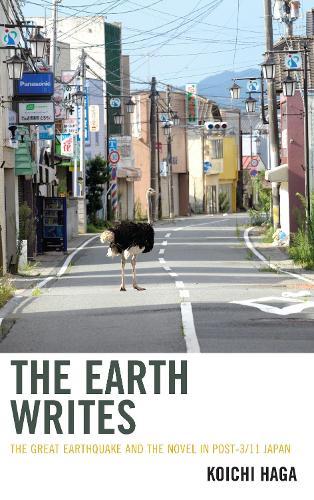Full Product Details
Author: Koichi Haga
Publisher: Bloomsbury Publishing Plc
Imprint: Lexington Books
Dimensions:
Width: 15.30cm
, Height: 1.10cm
, Length: 22.00cm
Weight: 0.227kg
ISBN: 9781498569057
ISBN 10: 1498569056
Pages: 148
Publication Date: 02 July 2021
Audience:
Professional and scholarly
,
Professional & Vocational
Format: Paperback
Publisher's Status: Active
Availability: Manufactured on demand

We will order this item for you from a manufactured on demand supplier.
Reviews
Koichi Haga's study of post-3.11 literature in Japan provides a fascinating and necessary glimpse for western readers into the Japanese experience of ecoprecarity in the wake of one of the most devastating natural-technological disasters in recent memory. While the March 2011 earthquake, tsunami, and subsequent nuclear meltdown received widespread attention, the cultural ramifications and interpretations of these events-and the lessons about nuclear risk that we can learn from this predictable and yet unexpected crisis-have scarcely been contemplated outside of Japan. I find this book to be a valuable contribution to risk criticism and ecocriticism. -- Scott Slovic, University of Idaho Haga shows how the massive earthquake of 3-11 unleashed not only a calamitous tsunami and the man-made nuclear disaster of Fukushima, it also shook to the foundations the form and content of contemporary Japanese fiction. Based on extensive research, the book is filled with fascinating insights that reveal the complex ways Japanese writers are reimagining what it means to live as humans on our volatile planet. -- Michael K. Bourdaghs, University of Chicago
Koichi Haga’s study of post-3.11 literature in Japan provides a fascinating and necessary glimpse for western readers into the Japanese experience of ecoprecarity in the wake of one of the most devastating natural-technological disasters in recent memory. While the March 2011 earthquake, tsunami, and subsequent nuclear meltdown received widespread attention, the cultural ramifications and interpretations of these events—and the lessons about nuclear risk that we can learn from this predictable and yet unexpected crisis—have scarcely been contemplated outside of Japan. I find this book to be a valuable contribution to risk criticism and ecocriticism. -- Scott Slovic, University of Idaho Haga shows how the massive earthquake of 3-11 unleashed not only a calamitous tsunami and the man-made nuclear disaster of Fukushima, it also shook to the foundations the form and content of contemporary Japanese fiction. Based on extensive research, the book is filled with fascinating insights that reveal the complex ways Japanese writers are reimagining what it means to live as humans on our volatile planet. -- Michael K. Bourdaghs, University of Chicago
Haga shows how the massive earthquake of 3-11 unleashed not only a calamitous tsunami and the man-made nuclear disaster of Fukushima, it also shook to the foundations the form and content of contemporary Japanese fiction. Based on extensive research, the book is filled with fascinating insights that reveal the complex ways Japanese writers are reimagining what it means to live as humans on our volatile planet. -- Michael K. Bourdaghs, University of Chicago Koichi Haga's study of post-3.11 literature in Japan provides a fascinating and necessary glimpse for western readers into the Japanese experience of ecoprecarity in the wake of one of the most devastating natural-technological disasters in recent memory. While the March 2011 earthquake, tsunami, and subsequent nuclear meltdown received widespread attention, the cultural ramifications and interpretations of these events-and the lessons about nuclear risk that we can learn from this predictable and yet unexpected crisis-have scarcely been contemplated outside of Japan. I find this book to be a valuable contribution to risk criticism and ecocriticism. -- Scott Slovic, University of Idaho
Author Information
Koichi Haga is associate professor of Japanese and Comparative Literature at Josai International University in Japan.




